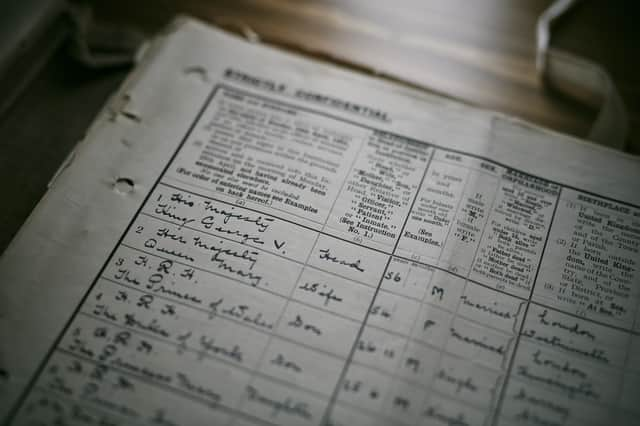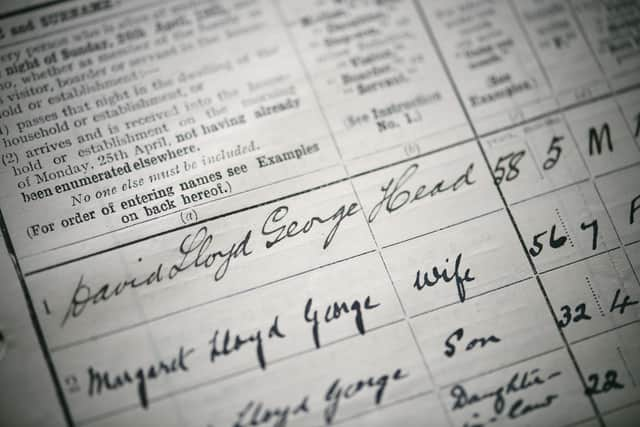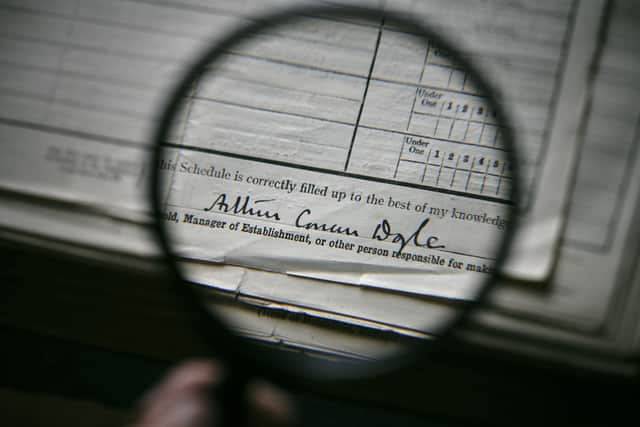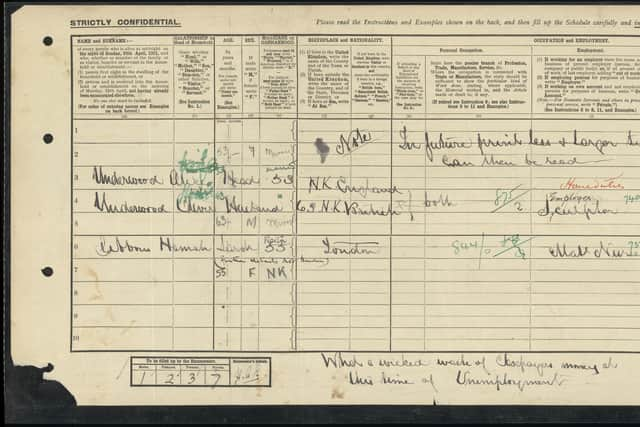1921 Census release: how to access England and Wales 100 year old record on Find My Past - is it on Ancestry?


On 19 June 1921, 38 million people living in England and Wales participated in the Census, and now, 100 years later - following a three year long journey to conserve and digitise more than 30,000 bound volumes of original documents - it is available to view.
The newly released 1921 Census offers readers a view into the past, and it features some famous names, like Captain Sir Tom and Sherlock Holmes author Arthur Conan Doyle.
Advertisement
Hide AdAdvertisement
Hide AdParticipants in the Census also used it as a means of protest, with historian and broadcaster professor David Olusoga saying that “this use of the Census reminds me of the way people now use Twitter”.
What does the 1921 Census show?
The 1921 Census offers viewers a glimpse into life 100 years ago in England and Wales.
Speaking to PA, historian and broadcaster professor David Olusoga said: “I think it shows a snapshot of a country in absolute trauma, a country in the midst of trying to recover from what was the biggest rupture in its history.”
Among those whose Census return underlined the hardship suffered by the working classes was James Bartley, a father of three young children from Sussex, who wrote: “Stop talking about your homes for heroes and start building some houses and let them at a rent a working man can afford to pay.”
Advertisement
Hide AdAdvertisement
Hide AdRetired Army officer Harold Orpen, 46, originally from London, apologised to Census officials for providing a typed response rather than the required handwritten one, adding: “I lost half my right hand in the late war and cannot write properly.”
Alice Underwood, 53, from Buckinghamshire, was more forthright.
“What a wicked waste of taxpayers’ money at this time of unemployment,” she wrote.


Audrey Collins, historian at the National Archives, said: “We can actually see at first-hand peoples’ quite heartfelt comments. You don’t protest about something if you’re just a little bit irritated; these are real cries from the heart.”
Advertisement
Hide AdAdvertisement
Hide AdShe added: “Undoubtedly, things were very, very grim for an awful lot of people in the 1920s.
“There were an awful lot of people out of work, and that didn’t really get better over the coming decade.
“So I think 1921 is very much a good survey of what the population was settling down to after the rigours of the First World War, but also it was the shape of things to come in the 1920s.”
The 1921 Census is more detailed than any previously undertaken, having asked people about their place of work, employer and industry for the first time, meaning high street names such as Sainsbury’s, Rolls-Royce and Selfridges appear on its pages.
What are some interesting facts in the Census?
Advertisement
Hide AdAdvertisement
Hide AdThe Census features a number of famous names and their families, including the Prime Minister David Lloyd George and King George V.
A one-year-old Thomas Moore also appears on the Census, a man who would go on to raise almost £33 million for the NHS during the Covid-19 pandemic, known as Captain Sir Tom.


The Census also shows that the residents in England and Wales also had a sense of humour.
Constance Bernard Fithamon, of Middlesex, listed her young children’s occupations as “getting into mischief”, “getting into more mischief” and, for her 11-month old, “occupying feeding bottles”.
Advertisement
Hide AdAdvertisement
Hide AdMany families also listed their beloved pets amongst their household members on the form, including the likes of “Bobby the dog” and “Tarzan the cat”.
The Census also appears to show that Arthur Conan Doyle, the author behind Sherlock Holmes, had been holding a seance after he counted three overnight visitors to his home when the Census was taken.
Mary McKee, head of content publishing operations at Find My Past, said: “The Census shows he was playing host to a number of mystics and psychics that evening.
“A seance seems the logical explanation of that gathering.”


Fellow author JRR Tolkien also appears on the Census, listed as working at the University of Leeds at the time.
Advertisement
Hide AdAdvertisement
Hide AdArthur Vince, a 28-year-old tax officer for the Inland Revenue in London, used his Census to predict that the world would go to war in 1936.
He sketched a cartoon which featured three men in top hats – deemed to be the elite – being served a cup of tea by a maid, sitting around a table with a piece of paper in front of them containing the words “War 1936”.
An annotation says they are “counting available ‘cannon fodder’. Next war 1936 from 1921 Census returns!”
Vince was only three years out with his forecast, with the Second World War beginning in September 1939.
How can I see the 1921 Census?
Advertisement
Hide AdAdvertisement
Hide AdIf you want to take a look at the 1921 Census, you can do so via the Find My Past website.
You’ll need to sign up to the site to get access - signing up is free, however there is a small fee to view the Census.


Find My Past states: “It costs £2.50 for every record transcript and £3.50 for every original record image.
“This will cover the cost of digitising and transcribing the 18,235,242 images created from the records supplied exclusively to us by the National Archives.
Advertisement
Hide AdAdvertisement
Hide Ad“It means these precious records are accessible, commitment-free, for everyone.”
Alternatively, it’s free to view the digital images of the 1921 Census of England and Wales on the premises at the National Archives at Kew, the Manchester Central Library and the National Library of Wales in Aberystwyth.
How do I navigate the 1921 Census?
If you’re looking to search for someone in the Census, you can do so after you’ve logged into your Find My Past account.


Once logged in, select the “search” option at the top of the page and within the menu, select the 1921 Census. This will take you to the 1921 Census search form.
Advertisement
Hide AdAdvertisement
Hide AdUsing the 1921 Census search form, you can search using a variety of ways, including names, birth years, locations, address and even employer. The search results will show you a list of all the people who have matched your search criteria.
Why doesn’t the Census include Scotland and Northern Ireland?
While the England and Wales Census is run by the ONS, the National Records of Scotland handles the Scottish Census and the Northern Ireland Statistics and Research Agency handles the Northern Ireland Census.
The Scottish 1921 Census had originally been scheduled for release in the summer of 2021, however it was pushed back. According to National Records of Scotland, the 1921 Scottish Census will be released “in the latter half of 2022”.
The 1921 Census was taken in Ireland due to the Irish War of Independence, with Censuses in Ireland and Northern Ireland conducted instead in 1926.
Advertisement
Hide AdAdvertisement
Hide AdA message from the editor: Thank you for reading. NationalWorld is a new national news brand, produced by a team of journalists, editors, video producers and designers who live and work across the UK. Find out more about who’s who in the team, and our editorial values. We want to start a community among our readers, so please follow us on Facebook, Twitter and Instagram, and keep the conversation going. You can also sign up to our newsletters and get a curated selection of our best reads to your inbox every day.
Comment Guidelines
National World encourages reader discussion on our stories. User feedback, insights and back-and-forth exchanges add a rich layer of context to reporting. Please review our Community Guidelines before commenting.
